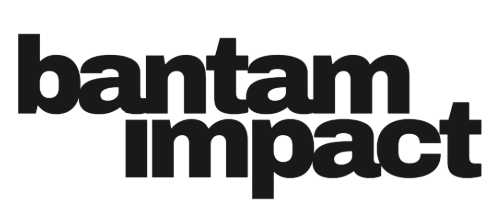Expect a Rise in Workplace Litigation: How Employers Can Prepare
The mass layoffs of federal workers under the Trump administration will have ripple effects across the workforce, leading to increased employment-related litigation. As more workers experience job displacement, legal disputes related to wrongful termination, discrimination, retaliation, and whistleblower protections are likely to surge. Employers in the private sector must take proactive steps to ensure they are protected from costly lawsuits and compliance risks.
While the public sector will experience the initial wave of layoffs, the impact will extend beyond government agencies. Businesses that work with federal contracts, rely on government funding, or operate in industries with high regulatory scrutiny may face workforce reductions or restructuring efforts of their own. Additionally, the influx of displaced workers into the private job market may increase competition and tensions, leading to more disputes over hiring practices, pay equity, and workplace conditions.
To mitigate legal risks, businesses should focus on strengthening compliance, improving workplace policies, and fostering a culture of transparency and fairness. Organizations that take a proactive approach will be better positioned to navigate these complex challenges while reducing their exposure to litigation.
Key Workplace Litigation Risks on the Horizon
As economic uncertainty grows, so does the likelihood of employees challenging employment decisions. The most common legal risks include:
1. Wrongful Termination Lawsuits
Workers who are laid off or let go in a volatile job market may be more inclined to challenge the legality of their termination. Allegations of wrongful termination can arise from:
Perceived bias in the layoff selection process
Failure to follow company policies or contractual obligations
Retaliation claims from employees who have recently raised concerns or complaints
2. Discrimination and Retaliation Claims
With heightened scrutiny on workforce reductions, employers may face claims of discrimination based on race, gender, age, disability, or other protected characteristics. Retaliation claims may also increase, particularly if employees feel they were let go after reporting misconduct or exercising their workplace rights.
3. Whistleblower Complaints and Retaliation Lawsuits
Employees affected by layoffs may be more likely to report workplace violations, regulatory non-compliance, or unethical behavior. The federal government has strong whistleblower protections, and companies that receive government contracts or funding are especially at risk of retaliation lawsuits.
4. Pay Equity and Hiring Disputes
As more former federal employees enter the private workforce, companies may face increased scrutiny over hiring practices, wage disparities, and equal pay compliance. Disputes may arise if companies adjust salaries based on previous public-sector compensation levels, which often differ from private-sector norms.
Proactive Strategies to Curb Litigation Risk
To protect against costly legal battles, businesses should take strategic steps to ensure compliance and fairness in their employment practices.
1. Strengthen Documentation and Layoff Procedures
Employers must have clear, well-documented justifications for any workforce reductions. Best practices include:
Establishing objective criteria for layoffs (e.g., tenure, performance, business needs)
Ensuring consistency in the layoff process to prevent claims of bias
Providing severance packages and outplacement support to reduce legal disputes
2. Conduct Compliance Audits and Policy Reviews
Regularly reviewing workplace policies and practices can help businesses identify potential legal vulnerabilities before they lead to litigation. Key areas to audit include:
Anti-discrimination and anti-retaliation policies
Employee classification and wage structures
Whistleblower protections and reporting procedures
3. Train Managers and HR Leaders
Managers play a critical role in preventing employment disputes. Proper training on compliance, performance evaluations, and termination procedures can reduce the likelihood of claims. Organizations should:
Provide training on handling layoffs and terminations lawfully
Educate leadership on implicit bias and fair decision-making
Ensure HR teams are well-versed in evolving employment laws
4. Foster Open Communication and Transparency
A workplace culture that encourages dialogue and addresses employee concerns proactively can help prevent disputes from escalating into lawsuits. Employers should:
Clearly communicate business decisions that affect employment stability
Offer avenues for employees to voice concerns without fear of retaliation
Encourage early resolution of disputes through mediation or internal review processes
5. Integrate Dispute Resolution Mechanisms
Implementing structured approaches to handling disputes can prevent costly legal battles. Many organizations benefit from strengthening their internal mediation processes, refining employee grievance procedures, and establishing structured conflict resolution strategies to address concerns before they escalate.
Navigating These Challenges Effectively
Successfully managing workforce transitions requires careful planning, legal awareness, and a commitment to fairness. Companies that adopt a structured approach to compliance, training, and communication will be better equipped to handle the risks associated with increased litigation.
For organizations looking to refine their employment policies, train leadership, and proactively address potential disputes, expert guidance can make all the difference. Developing clear strategies for risk mitigation and workforce planning now can help businesses avoid costly legal challenges in the future. A well-prepared organization is not only legally protected but also fosters a stable and fair workplace environment, strengthening employee trust and long-term resilience.
For organizations seeking guidance on compliance, workforce planning, and dispute resolution, external expertise can provide critical support. Bantam Impact Consulting offers tailored solutions to help organizations navigate legal risks, foster transparent communication, and implement best practices that minimize exposure to litigation. By taking proactive steps today, companies can build a workplace that is both legally sound and resilient in the face of change.




